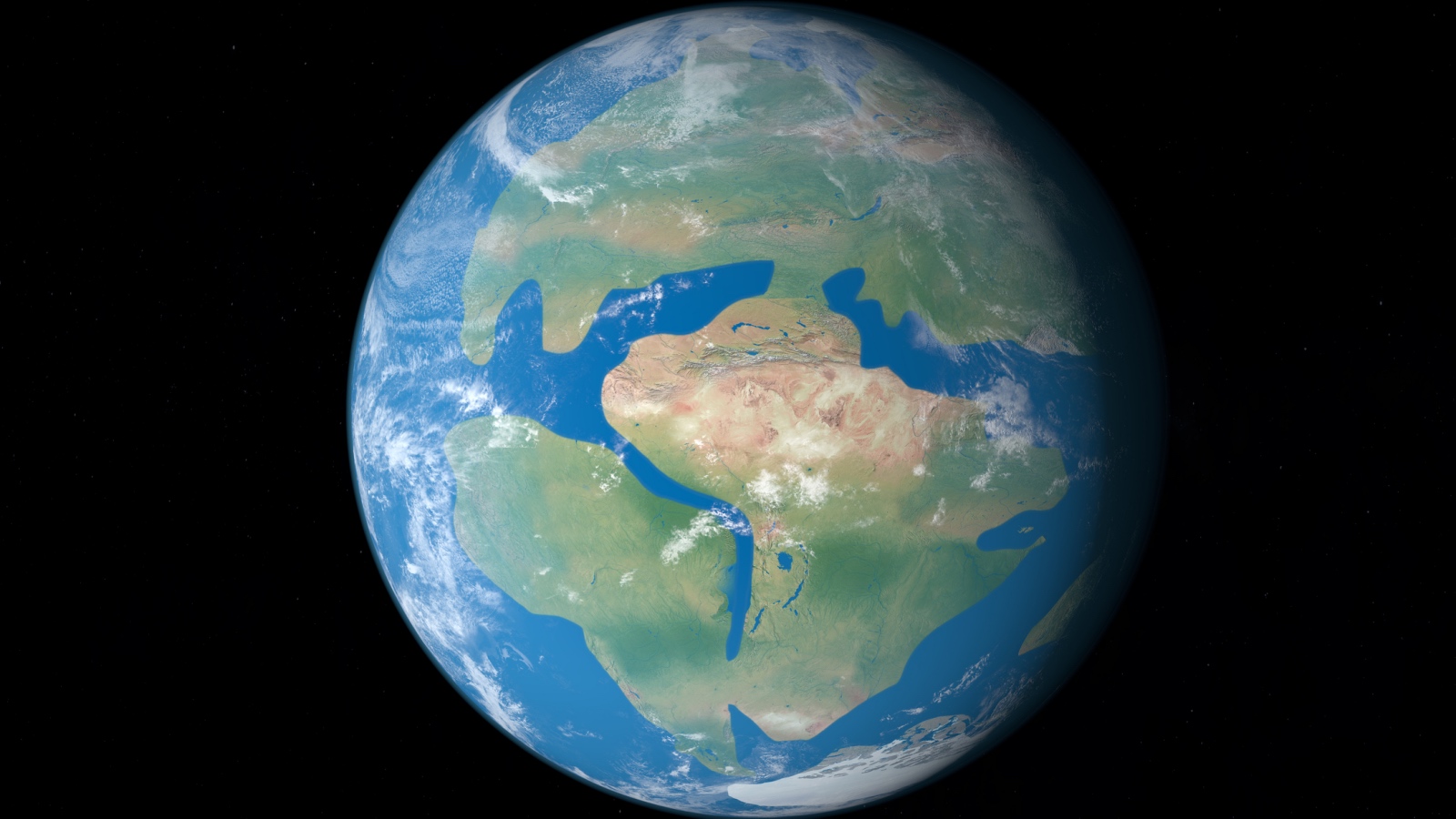
iStockphoto / Ianm35
A new study has predicted the end of human life and a mass mammal extinction in a few hundred million years as the earth slowly morphs into a supercontinent that is uninhabitable.
The supercontinent is being called Pangaea Ultima and it expected to form at the equator in approximately 250 million years, roughly 400 million years after the original Pangaea broke apart. What will spell the end of human life and a mass mammal extinction is combination of uninhabitable land driven barren by increased volcanic activity and carbon dioxide levels.
The new study was published today, September 25th, in the journal Nature Geoscience. The abstract begins by acknowledging that “all life will eventually perish” in several billion years “once absorbed solar radiation exceeds the emission of thermal radiation.” But then states that mammals may not make it past 250 million years from now.
It goes on to state:
In ~250 Myr, all continents will converge to form Earth’s next supercontinent, Pangea Ultima. A natural consequence of the creation and decay of Pangea Ultima will be extremes in 𝑝CO2 due to changes in volcanic rifting and outgassing. Here we show that increased 𝑝CO2, solar energy (F⨀; approximately +2.5% W m−2 greater than today) and continentality (larger range in temperatures away from the ocean) lead to increasing warming hostile to mammalian life.
The long and short of it is that earth, over time, is getting significantly hotter. Continents are shifting and a future super continent will converge around the equator.
Once there, temperatures will be the hottest across every continent rendering most of the earth completely uninhabitable for mammals. Alexander Farnsworth at the University of Bristol, a co-author of this study, furthermore found that shifting continents would lead to a spike in volcanic activity that “spews huge amounts of CO2 up into the atmosphere” heating earth even further.
Jonathan O’Callaghan of Nature.com further explains that solar radiation will also be cooking the earth by the formation of the supercontinent. He writes “The Sun is predicted to be 2.5% more luminous at the time of Pangaea Ultima’s formation, a result of the star having burnt more of its hydrogen fuel and shrunk its core, increasing its rate of nuclear fusion.”
He then spells out the doomsday scenario where C02 levels of 120 parts per million (currently 416.31 ppm in Hawaii) would render only 8% of the earth’s surface habitable compared to 66% today.
At that point, they spell out a mass extinction for mammals, plant life, and every other organic creature on earth. Even stating that a new species might emerge to dominate in the inhospitable conditions.
The study did say that it’s possible some mammals survive. One of the study’s authors says “Whether or not they all go extinct is just one outcome, but it’s not the [only] outcome.”
Going full Sci-Fi, Farnsworth predicted that earth will resemble the planet of Dune in 250 million years. Stating “do humans become more specialist in desert environments, become more nocturnal, or keep in caves? I would suspect if we can get off this planet and find somewhere more habitable, that would be more preferable.”
250 million years is such a long time we cannot even wrap our minds around it. It was around 250 million years ago that another mass species extinction occurred, the Permian Extinction, that wiped out 90% of the species on earth.
Given the current race from billionaires to start terraforming other planets and get off earth, it is hard to imagine our species will be confined to the third rock from the sun even a million years from now.